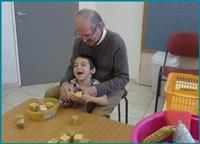
Walter Solomon
The Waldon Approach, Israel
Title: The Movement Perspective is the Foundation for The Waldon Approach - A Sensory-Motor Intervention for Children with ASD
Biography
Biography: Walter Solomon
Abstract
Further to a review of the literature on the role of intentional sensory motor activity in the growing understanding of the typically developing child, including how abnormalities in movement interfere with typical development, we will describe a therapeutic approach for cognitive, emotional and social skills based on movement.
Movement is itself the source of sensory experience, and forms the sensory-motor basis of thinking. When the baby moves, even in utero, he constantly expands and increases the information transported to his brain. His brain changes from the moment he begins to move. New neurons and cell connections are formed and the network of existing connections is reinforced.
The typically developing baby moves his hands and feet in space in movements that seem meaningless, random or pointless to the naked eye. However, this early movement is crucial for the development of his future understanding, initiating a cascade of responses in the brain and forming the basis both for motivation and for the experience to perform more complex movements.
The Waldon Approach is a movement-based therapy concentrating on the upper body and simulating the early movements, which a child with ASD may have missed. The Waldon Lesson mimics the typically developing child moving and playing alone without need for instruction, approval or guidance - just acting by self-motivation. He plays for his own pleasure and the facilitators do not have any verbal communication or eye contact with the student during the activity time. Counter–intuitively a strong social bond is created between facilitator and child who understands that the facilitator will help him whenever necessary. The facilitator will do the requisite minimum to arouse the child to movement with much crossing of the midline to ensure effective bodily integration. He will indicate the desired movement, either by moving the child’s hands or arms, as well as by lightly touching or pointing at an object or a direction.
The presentation will include video of Waldon Lessons.

